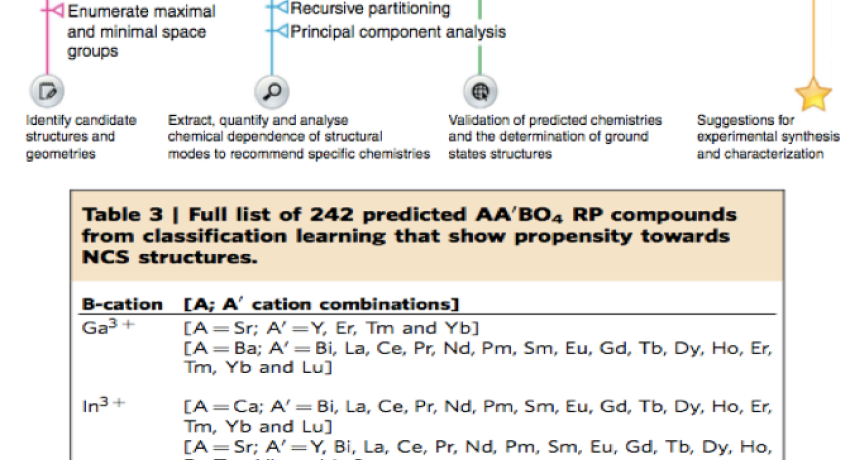New acentric and polar material classes predicted by an integration of group theory, materials informatics, and ab initio electronic structure.
MRSEC researchers have developed an informatics-guided ab initio approach to accelerate the design and discovery of noncentrosymmetric materials, integrating group theory, informatics and density-functional theory to uncover new design guidelines for layered Ruddlesden-Popper oxides. Group theory identifies how the interplay of oxygen octahedral rotation patterns and ordered cation arrangements break inversion symmetry, while informatics tools learn from available data to select candidate compositions that fulfill the group-theoretical postulates. 242 compositions have been identified after screening ~3,200 candidates, 25 times more than the number of known noncentrosymmetric Ruddlesden-Popper oxides. Predictions were validated for 19 compounds using phonon calculations, among which 17 have noncentrosymmetric ground states, including two potential multiferroics. This approach enables rational design of materials with targeted crystal symmetries and functionalities.
Credits/Names: National Science Foundation DMR-1420620 and DMR-1454688; Los Alamos National Laboratory LDRD 20140013DR
Prasanna V. Balachandran1, Joshua Young2, Turan Lookman1, James M. Rondinelli2
1Los Alamos National Laboratory 2Northwestern University
Download PDF Version: IRG1 Learning from Data Revised.pdf
Year of Highlight: 2018
IRG: IRG1 - Layered Ferroics


